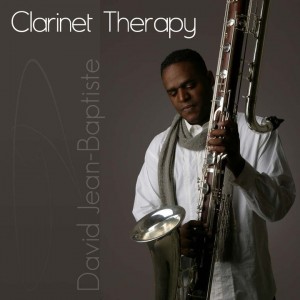Posts Tagged ‘clarinet’
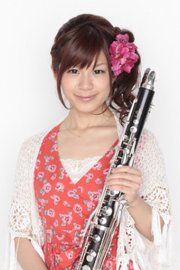 Just want to share with you a few thoughts about the clarinet and why I believe it a good choice of instrument to learn.
Just want to share with you a few thoughts about the clarinet and why I believe it a good choice of instrument to learn.
The clarinet is one of those instruments when a person reaches an acceptable level of ability it brings a sense of as the French say, a certain Je ne sais quoi…When a person is able to express themselves on a musical instrument, there is a corresponding emotion associated with it. Loud amplified electric guitar playing can make the player feel indestructible. The saxophone is generally louder, conical and more often seen and heard than its brother the clarinet, and people generally feel a connection to popularity and sense of release when playing it. The trumpet is regal, perfect to proclaim the fanfare of kings. In jazz the trumpet is looked upon as a leaders instrument. Think of Miles Davis, Louis Armstrong, Wynton Marsalis to name a few.
The clarinet on the other hand has a little something intangible to it. A combination of clarity in tone, finesse in sound delivery and a tad above the rest, in the best possible meaning of course. Also in classical music there is a healthy repertoire of music written for the instrument.
Maybe it’s the fine keywork in relation to wood, lathed into a cylindrical bore. Yes there are metal clarinets and plastic clarinets, even clarinets made from glass. There is something about the wood, rosewoods, grenadilla, African blackwoods, cocobollo, the distinctive shape of the instrument and the focused sound, that in my opinion sets it above the rest.
So far I have been referring to the more often seen B flat clarinet in this article to learn to play clarinet online. When we bring other members of the clarinet family into the equation, the appeal of the clarinet sky rockets exponentially. The bass clarinet is totally sublime, the contra-bass clarinet can be dark and dirty, perfect for adding weight and authority to bass lines in any music genre. The basset-horn can be so sweet sounding at the top of the instrument, with a singing quality to it. Then sounds like the younger brother of the bass clarinet in its lower register. It’s no surprise that Mozart fell in love with the basset-horn.
So there you have it, learn to play the clarinet…The instrument is perfectly poised to grace ever evolving musical soundscapes with depth and meaning. It is on, and you are about to be part of it.
Best Regards David
David Jean-Baptiste
© The Wellness Clarinet Ltd 2012
David Jean-Baptiste In Conversation with Anton Weinberg
Anton Weinberg a student of Hans Keller has held international professorships of music at Indiana University, professor of clarinet at the Guildhall School of Music and Drama in London’s Barbican Centre, a professor in the new Gulbenkian and Leverhulme Trusts, and a member of the faculty for the government-sponsored National Youth Orchestra of Spain.
He has been a professor at Darlington International Summer School under the directorship of Peter Maxwell Davies, a faculty member at the National Centre of Orchestral Studies in New York, and a visiting professor at the Conservatories of Peking and Shanghai, where he gave lectures as part of the first Anglo/American cultural visits. He is also an authority on the sociology and psychology of music.
Anton’s book ‘Unfinished Sentences,’ with a preface from Lord Menuhin, stands as a testament to mastery.
‘Brilliant concepts, I recommend Anton Weinberg as a marvellous musician, interpreter, teacher and thinker’. (Lord Menuhin)
‘The most versatile of us all, he can be regarded as an expert in so many different fields. In addition he is unusually articulate revealing matters which many of us can only hope to demonstrate’. (Jack Brymer O.B.E)
I met with Anton one early autumnal evening in Paddington station, over a coffee to discover what light this man may be able to shine on mindset in relation to performing. Naturally I have my own practical techniques on this. Other than the obvious one of visualizing a perfect performance, I approached the meeting with one main question…What can a performer do mentally in preparation for a performance, to increase the likelihood of giving the audience a wow! Moment…a moment of magic?
A moment of magic can best be described as a point in time where thoughts disappear and the viewer is suddenly in another world.
Performing to an audience as I see it is a multi-directional wave of consciousness connecting everyone in the room. A connection comprised of sounds, bodily sensations and impressions. The performer creates a moment of magic when in such a state of complete flow that they draw the audience into a moment of total awareness.
Anton agreed, adding that a performance mindset that creates magic is totally instinctive, and the essence of art is interaction. He talked of Andres Segovia and how he would take a passage or phrase of music and interpret it in thirty different ways in preparation. This was certainly an ah ha moment and struck a chord with me.
He spoke of cellist Rostropovich and Sting how they can summon these great musical moments with a jazz like improvisatory flair. How Katya Labeque plays chords so improvisatory, formal and simple with an unexpected quality; as Beethoven and Bach used to improvise at parties.
Anton told stories from the lives of actors and comedians Sid James, Morecombe and Wise, and Tony Hancock; stories of situations that created moments of magic in comical genius. He talked of Pushkin http://rosiamar.nm.ru/ruslan.html and that audiences in all forms of art seek these moments of magic be it literature, dance or visual art.
Indeed I thought, these special moments have the power to enlighten people and change the course of their lives.
“The instrument is just a vehicle, sense the audience, feel the corporate character of the audience,” he said. “It is something you can’t really prepare for, in fact too much preparation can be counter productive. When Leopold Stokowski the British born conducter conducted, if there was a fidgety audience he would play quieter and slower. Dynamics in the music have nothing to do with volume and everything to do with character. A silent whisper can be infinitely more potent than an outburst. Maintain a positive mindset question everything and believe nothing.”
In my mind it had been a very satisfactory meeting, as Anton had totally over delivered on my question. Leaving me plenty to think about and had created ample growing room for me to improve on my own performance.
We both agreed that performance is where the money is, as these days what is expected of the top players has become homogeneous in terms of sound, technique and musicality. Now unlike the past it is becoming harder to tell one top player from the other on recordings.
“Everyone is a genius but if you end up measuring a fishes ability by his ability to climb trees he’ll end up thinking he’s stupid” (Einstein)
So to summarise, to harness the power to create moments of magic do everything to play with increasing awareness and never over prepare. Ask yourself often, how can I create a moment in the now? Knowing in your ability to do this. The more we think of our own individual abilities to create magical moments, the stronger these thoughts will become and the more often they will happen.
Have Fun David
© The Wellness Clarinet Ltd 2012
 May the classical player play Weber’s concertos differently from the last time performed. Some may say this is a challenge, but when looked upon in the bright light of reality it is not really. Great clarinetists do this consistently and naturally making hairs stand on end each time at that. We may embrace the same intention of awareness when playing the music of Brahms and Mozart, Poulenc and Milhaud. Playing the notes and then forgetting them. Meaning our spirit and true nature takes command over our controlling and suppressive musical tendencies. So we can flow and therefore speak through the notes of the music like a new wave of consciousness. So we can feed our audience something new and inspirational; even though the presentation of notes, their order, melodies rhythms and harmonies of the music, may have remained the same as they have always been for the past 300 years.
May the classical player play Weber’s concertos differently from the last time performed. Some may say this is a challenge, but when looked upon in the bright light of reality it is not really. Great clarinetists do this consistently and naturally making hairs stand on end each time at that. We may embrace the same intention of awareness when playing the music of Brahms and Mozart, Poulenc and Milhaud. Playing the notes and then forgetting them. Meaning our spirit and true nature takes command over our controlling and suppressive musical tendencies. So we can flow and therefore speak through the notes of the music like a new wave of consciousness. So we can feed our audience something new and inspirational; even though the presentation of notes, their order, melodies rhythms and harmonies of the music, may have remained the same as they have always been for the past 300 years.
A key goal in jazz music is to be open to the moment musically and to respond accordingly, rather like a medium of sort; a musical response to the musical inclinations of the other performing musicians on stage. Also to the audience; aiming to create a new melody or feeling. I know a Danish pianist composer and improviser who can improvise complete works of music. Every time he plays it will be different to anything you heard previously. He simply has an open channel to universal energy flow. So therefore if we can do this It must be possible for a clarinetist to tap into subtle energies in a room of people so to create a euphoric feeling in them when playing the music of Bach for example.
Once at a small Improvised music event in London, two experimental improvisers toyed on stage. They toyed around looking for new ways to turn their performance, and to take the audience by surprise. At one point the bassist of the duet rolled up a carpet he was using to keep his bass in place while playing and began hitting his bass with the carpet, producing some weird but different acoustic effect. “What is that man doing to that lovely instrument?” was the general feeling in the room. Through the ensuing shock that followed and general apprehensive atmosphere in the audience created by this action, someone shouted out “Rubbish!” a brief pause followed, then…”rubbish rubbish, rubbish, rubbish, rubbish.” The very next turn in the music saw the musicians using the word rubbish spontaneously in their improvisation. Be clear on this, not to say improvisation is rubbish, because it is an art form as valid as any.
The new iPhone 4s comes out this week, if you want to be on the edge of it all; include a new ringtone from the latest iPhone in your current recording. This is something that could never have happened in the past.
So in summary modern clarinet performance has everything to do with present moment awareness and responsiveness to what’s happening in the moment. These might be thought processes, sensations, dreamscapes as well as physical occurrences. Both jazz and classical music it is the same processes at play; tune up and tune in.
Have Fun, David
© The Wellness Clarinet Ltd 2012
By BOB BERNOTAS
When you hear the phrase, “New Orleans jazz,” what three instruments immediately come to mid? That’s right: cornet, trombone, and clarinet. In those early jazz combos, the clarinet provided a soaring, high register obbligato that enhanced, and, in the hands of the amazing Sidney Bechet, challenged, the cornet’s lead line. A decade or so later, the clarinet occupied a rightful place as one of the signature instruments of the big band era, serving as a distinctive tone color in the ensemble and an important solo voice. After all, the so-called “King of Swing,” Benny Goodman, was a clarinetist.
But starting with the bebop era, the clarinet inexplicably began to fall out of fashion in jazz. Despite the persistence of such gifted boppers as Buddy De Franco and Jimmy Hamilton, by the end of the 1950s the instrument had all but disappeared from the music’s mainstream. None of the important small bands of the day, and, with the exception of Duke Ellington, very few big bands, featured a clarinetist. As a consequence, few pure clarinet players – as opposed to saxophonist doublers – came to prominence in jazz in the post-war period.
Today, many (perhaps most) jazz listeners regard the clarinet as a relic of the past, the property of moldy figs and swing-era diehards. Nevertheless, though the 1960s and 1970s the avant-gardists, in their quest for new sounds (as well as old ones), rediscovered the instrument, at least in a limited way. Some even began to feature members of its extended family, like the alto, bass, and contrabass varieties, occasionally in multi-clarinet ensembles. And during recent decades, this music has been enriched by a handful of dedicated clarinet specialists, like the late John Carter, Alvin Batiste, and Don Byron, who have fought to keep their instrument in the forefront of creative jazz.
Sidney Bechet: The Best of Sidney Bechet (Blue Note, 1994; original recordings, 1939–1953)
This New Orleans-born master dominated every ensemble he ever played in with his florid, vibrato-driven bravura. Among its treasures, this collection includes two genuine jazz masterpieces: Bechet’s soulful clarinet blues, “Blue Horizon,” and “Summertime,” featuring his inimitable soprano saxophone.
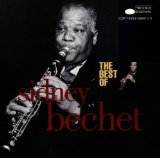
Jimmie Noone: An Introduction to Jimmie Noone: His Best Recordings, 1923–1940 (Best of Jazz,1997)
Originally a New Orleans contemporary of Bechet, Noone made his mark in Chicago as both a blues specialist and a singular interpreter of such popular tunes as “I Know That You Know” and his lovely theme song, “Sweet Lorraine.” He also was an early and important influence on the young Benny Goodman.
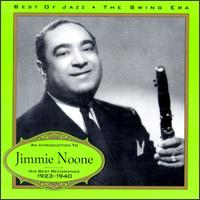
Barney Bigard: Barney Bigard Story, 1929–1945 (EPM,1996)
Bigard brought the New Orleans Creole clarinet tradition into Duke Ellington’s orchestra, where, from 1928 to 1942, his fleet solos and intricate embellishments lent color and character to countless jazz classics. His long post-Ellington career included a stint with Louis Armstrong’s All-Stars (1946–55).
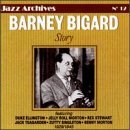
Benny Goodman: Complete RCA Victor Small Group Master Takes (Definitive,2000; original recordings, 1935–1939)
Although his big band defined the Swing Era for millions of fans, over the years Goodman played his best jazz with his various all-star small groups. This two-CD set spotlights BG’s original trio (with pianist Teddy Wilson and drummer Gene Krupa) and quartet (which added Lionel Hampton on vibes).
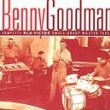
Buddy De Franco: Mr. Clarinet (Verve,1953)
De Franco emerged from mid-1940s big band reed sections (notably that of Tommy Dorsey) to become the essential bebop clarinetist. This typically brilliant session features his stellar working quartet of the day with pianist Kenny Drew, bassist Milt Hinton, and drummer Art Blakey.
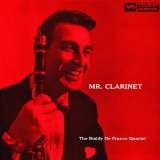
Jimmy Hamilton: Can’t Help Swingin’ (Prestige,1961)
For 25 years (1943–1968) this technically superior musician served as Duke Ellington’s principal clarinet soloist. Hamilton plays both clarinet and his Ben Webster-inspired tenor saxophone on these tracks, which also feature two all-time jazz giants, trumpeter Clark Terry and pianist Tommy Flanagan.
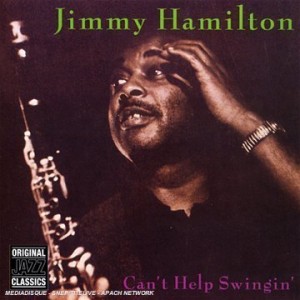
Eric Dolphy: Out There (New Jazz/OJC,1960)
More than anyone else, this visionary multi-reedplayer established the bass clarinet as a jazz instrument. On this pianoless quartet date with Ron Carter on cello, Dolphy is heard on bass (“Serene” and “The Baron”) and B-flat clarinets (Charles Mingus’ “Eclipse”), as well as flute and alto saxophone.
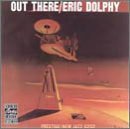
John Carter: Castles of Ghana (Grammavision,1986)
A gifted instrumentalist and an important composer, Carter helped carve a niche for the clarinet in the jazz avant-garde. This recording, the second movement of his monumental five-part epic Roots and Folklore: Episodes in the Development of American Folk Music , is regarded by many as Carter’s finest work.
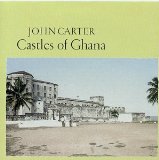
Clarinet Summit (Alvin Batiste, John Carter, Jimmy Hamilton, David Murray): In Concert at the Public Theater (India Navigation,1981)
Formed by John Carter, this quartet united three hardcore modernists – Carter, Batiste (who lives and works in New Orleans), and Murray (on bass clarinet) – with respected veteran Hamilton. Their now legendary debut concert offered a wide-ranging repertoire of Ellingtonia, bebop, and free playing.
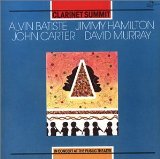
Hamiet Bluiett: The Clarinet Family (Black Saint,1984)
This eight-clarinet ensemble (plus bass and drums) truly encompasses the instrument’s entire family, from the tiny E-flat sopranino to the large contrabass. This one-time-only live performance features Bluiett on alto clarinet, along with such accomplished clarinetists as Buddy Collette, Don Byron, and J.D. Parran.
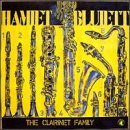
Don Byron: Music for Six Musicians (Nonesuch,1995)
Committed to bringing the clarinet back into the forefront of creative jazz, Byron respects no musical boundaries. His creed is, “If it can be played, it can be played on the clarinet” – swing, klezmer, lieder, show tunes, funk, or, on this sextet session, skronky, Afro-Cuban-inspired original compositions.
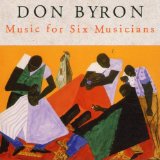
Paquito D’Rivera: The Clarinetist: Vol. 1 (Music Haus,2001)
On this rare all-clarinet recording, the Cuban-born reed virtuoso performs with a chamber orchestra and a Latin jazz rhythm section, and in trio with piano and cello. D’Rivera skillfully bridges the gap between classical and jazz, with a healthy helping of tango á la Astor Piazzola mixed in.
Hello Dear Readers David Here…
The Contra-bass clarinet is truly an amazing instrument and a totally under used member of the Clarinet Family. Think about the low C on a Bass Clarinet and then try to hear the C an octave lower…You are now at the bottom of the Contra-bass Clarinet.
Although I could ramble on about it I won’t talk to much about it, but will give you a long Solo Contra-bass Clarinet Improvisation I did about a year ago call `Mind in Body´…Bear in mind it is an improvisation!…Notice how the sound of the instrument resonates with the energy centers in your body opening them…Enjoy
(click image below)
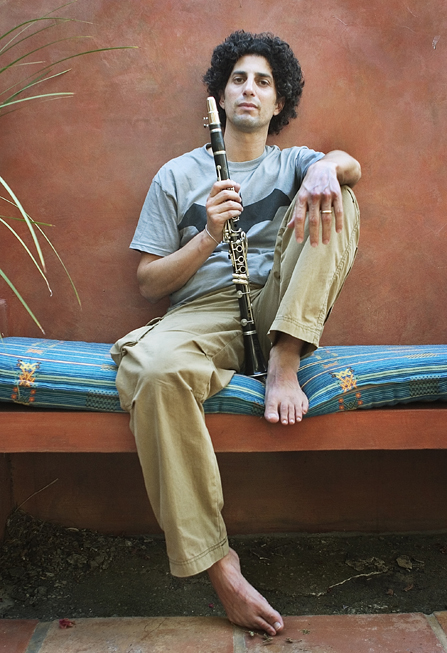 Klezmer (Yiddish כליזמר or קלעזמער, pl כליזמר,כליזמרים, from Hebrew כלי זמר — instruments of music) is a musical tradition of the Ashkenazic Jews ofEastern Europe. Played by professional musicians called klezmorim, the genre originally consisted largely of dance tunes and instrumental display pieces for weddings and other celebrations. The genre has its origins in Eastern Europe. In the United States the genre morphed considerably as Yiddish-speaking Jewish immigrants from Eastern Europe, who arrived between 1880 and 1924,[1] met and assimilated American jazz. During the initial decades after the “Klezmer Revival,” this was what most people knew as klezmer, although in the current century musicians have begun paying attention to the “original” pre-jazz traditions as some original revivialists (e.g., Josh Horowitz, Yale Strom, Bob Cohen) spent years doing field research in Eastern/Central Europe. Additionally, late immigrants from the Soviet Union such as German Goldenshtayn brought their surviving repertoires to the United States and Israel in the 1980s.
Klezmer (Yiddish כליזמר or קלעזמער, pl כליזמר,כליזמרים, from Hebrew כלי זמר — instruments of music) is a musical tradition of the Ashkenazic Jews ofEastern Europe. Played by professional musicians called klezmorim, the genre originally consisted largely of dance tunes and instrumental display pieces for weddings and other celebrations. The genre has its origins in Eastern Europe. In the United States the genre morphed considerably as Yiddish-speaking Jewish immigrants from Eastern Europe, who arrived between 1880 and 1924,[1] met and assimilated American jazz. During the initial decades after the “Klezmer Revival,” this was what most people knew as klezmer, although in the current century musicians have begun paying attention to the “original” pre-jazz traditions as some original revivialists (e.g., Josh Horowitz, Yale Strom, Bob Cohen) spent years doing field research in Eastern/Central Europe. Additionally, late immigrants from the Soviet Union such as German Goldenshtayn brought their surviving repertoires to the United States and Israel in the 1980s.
Compared to most other European folk music styles, very little is known about the history of klezmer music, and much of what is said about it must be seen as conjecture.[2] Starting in 2008, “The Other Europeans” project, funded by several EU cultural institutions,[3] spent a year doing intensive field research in Moldavia under the leadership of Alan Bern and scholar Zev Feldman. They wanted to explore klezmer and lautari roots, and fuse the music of the two “other European” groups. The resulting band now performs internationally. As with this ensemble, groups like Di Naye Kapelye and Yale Strom & Hot Pstromi have incorporated Rom musicians and elements since their inceptions.
Picture: Gustav Bulgash (The Prince of West Coast Klezmer)
Clarinet players from Stadler to Fröst
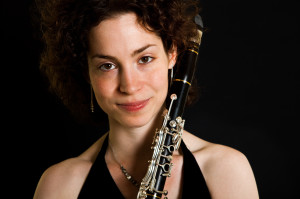 There are and were a lot of excellent and popular clarinet players and ensembles, and it is not simple to give you a list of the “best known” or “the best”. You find a list of the ones that I found were/are important in their time.
There are and were a lot of excellent and popular clarinet players and ensembles, and it is not simple to give you a list of the “best known” or “the best”. You find a list of the ones that I found were/are important in their time.
Quite often the clarinet players influenced composers directly – this wasn’t always just a professional relationship only, but often a friendship. It helped both: The musician needed new and popular pieces to play, and the composer benefited from finding out what a player could do with the instrument. Most composers then and today play the piano and maybe one other instrument, the more they know about the characteristics of the instruments, the better they can set music for them. You find a lot of such relationships between composer and player: Stamitz and Joseph Beer, Mozart and Stadler, Spohr and Hermstedt, Weber and Baermann, Brahms and Mühlfeld, as well as Benny Goodman who worked together with modern composers a lot.
Since the time I started to write this web page – late last century – media channels like Youtube have become very popular, and broadband access is affordable to most of you. This changes the way we can access and consume music and media. In result you can watch most of today’s players in videoclips in famous concert halls right in your browser. It is technically possible to list links to these videos, but they may change frequently and some are simply illegal in some countries. You will easily find them by using the search option of youtube entering Stoltzman, Meyer or Neidich – and you will find hundreds of excellent concerto recording clips and videos, some in HD and HiFi.
The definite highlight is the series from Denmark Play with a Pro, where renowned instrumental teachers and professionals give masterclass-type lessons. This includes clarinets, too.
Now which players should be on this page? This is especially difficult to answer for an international web page, because the question whether a player is well known depends, too, very much on the country you live in. Since I am German and wrote the page for German-speaking readers at first (and later translated it) you still find lots of Germans here.
Anton Stadler
Anton Stadler (1753 – 1812) is off course so well known, because his playing inspired Wolgang Amadeus Mozart to write his popular compositions. Without an extremely capable clarinet player one can hardly imagine the love of a composer like Mozart for the clarinet: At that time it was a crude, very imperfect instrument (and at the same time the string section played on Stradivaris – even today there is nothing better!). On the other hand the man Stadler was an infamous gambler and drinker, he fell nothing short to Mozart in spending money he didn’t have: When Mozart died as poor man, Stadler still owed him money.
Johann Simon Hermstedt
Johann Simon Hermstedt (1778-1846) was the virtuoso with a technical talent. His tone was not as beautiful as Heinrich Baermann’s (that is why Weber preferred Baermann and wrote for him), but Hermstedt was not only a player who could play nearly everything, but a gifted kraftsman as well. The composer who wrote for him was Spohr. Spohr did not care for any problems the player might have with a piece which in return resulted in Hermstedt improving the mechanics of his instrument. This pushed forward the technical improvement of the clarinet a lot. Even today with advanced instruments you will find the four concertos for Hermstedt to be packed with tough challenges for the most experienced players.
Heinrich Baermann
Heinrich Baermann (1784 – 1847) started his musical career as oboe player in Potsdam. Then he learned to play the clarinet and went to Munich to King Ludwig’s court, later to Vienna and London. He traveled all over Europe on concert tours. In Munich he met Carl Maria Von Weber and, like Mozart wrote concertos for Stadler, Weber wrote for Baermann. The success was overwhelming. Weber wrote to a friend: “The whole orchestra went crazy and demands concertos from me. The are even writing to the King and the board of musical directors…”.
Carl Baermann
Heinrich Bearmann’s son (1811 – 1885) Carl was a famous player, too, but today he may be even better known as professor for music and author of a clarinet book, that most of the German students still use today. He, too, has helped to improve the mechanics of the instrument.
Richard Mühlfeld
Richard Mühlfeld (1856 – 1907) started as violinist in the court orchestra in Meiningen, and taught himself to play the clarinet. His importance lies in his friendship with Johannes Brahms, who called him – due to his sweet tone – “miss clarinet”. Brahms had already stopped composing, but Mühlfelds playing made him write his last works for Mühlfeld’s clarinet.
The letter “ü” is pronounced similar to the “y” in “physics”. If you don’t find it on your keyboard, you rather replace it by a “ue” than typing “u”.
Jack Brymer
Jack Brymer is an English clarinet player, who has recorded a lot of important pieces together with great orchestras. He is maybe even better known to the musical world because he has written an excellent Book about the clarinet that was translated in many languages (if there is one book you should read as clarinet player, this is the one). He has intensively thought about many aspects of the instrument, the sound of the clarinet and different ideas about it in the world and he is a well known clarinet teacher.
The book will be found even in small local libraries. But because the book is one in a series published by Sir Yehudi Menuhin, you may find it in the library under “M” rather than under “B”.
Karl Leister
Karl Leister is the German clarinet player that you will find the most German recordings of. He played with Karajan more than thirty years. His recordings are allways perfect and adapted to the musical style required.
Dieter Klöcker
Dieter Klöcker is a German clarinet player with a lot of recordings. Especially if you are looking for pieces that are not top sellers, you may find recordings with him. Besides his playing career he is a Professor in Freiburg with a focus on jewish music. Many pubications.
The letter “ö” is pronounced similar to the “i” in “sir”. If you don’t have it on your keyboard, replace it by “oe” rather than “o”.
Jost Michaels
Jost Michaels was an excellent player, but was even better known as Professor in Detmold, where he focussed on playing technique. On this subject he has published a (German) book Spieltechnik.
Richard Stoltzman
Richard Stoltzman is the most popular classical clarinet player in the United States of America today. He is playing with famous orchestras and recording CDs. On his homepage (www.richardstoltzman.com) you find samples of his music and links to YouTube videos, including performances with the children’s tv programme Sesame Street. You may even have one of his recordings on your computer, if you use Microsoft’s Windows 7: They put his version of Debussys “Maid with the flaxen hair” as example for the media player onto your disc, if you have got a standard installation – try and click … Sample Music/Maid with the Flaxen Hair.mp3.
Charles Neidich
Charles Neidich is a popular classical clarinet player in the United States of America. playing with famous orchestras and recording CDs. You can watch him and other clarinet players in the excellent series of videoclips from Denmark (in English Language) called Play with a Pro, each clip focuses on an important aspects of clarinet playing.
Sabine Meyer
Sabine Meyer is a popular German solo clarinet player and frequently tours with excellent ensembles. She has recorded a large number of CDs. She also is a Professor for clarinet in Lübeck. She became known to the public when Karajan called her to the Berlin Philharmonics to be one of the first women in the Orchestra (especially in the clarinet section) which led to some irritations. Today she probably is Germany’s most popular clarinet player.
Sharon Kam
Sharon Kam was born in Israel and won a stipendiate of the Jewish-American Cultural Society at the age of 12. Since then she gives concerts with famous orchestras and collects media prizes. Today she is living in Germany. She is a good example for the modern, flexible clarinet player who can adapt to the style required rather than playing all types of music in exactly the same manner.
Martin Fröst
Today the swedish clarinetist Martin Fröst (www.martinfrost.se) is definitely the most unconventional international wind players. On the one hand he is a gifted solo clarinet player, who frequently tours with excellent orchestras like the German Chamber Philharmony Bremen, the Austrian Camerata Salzburg or the Hamburg Symphonics. But since there is a number of brilliant soloist out there, this would not be sufficient to establish yourself in this time. Fröst has therefore invested the price money he won in a competition into an unusual composition that combines modern music with dance and acting elements (you find the video at his home page). This makes performances by Fröst interesting for a wide audience, and that again translates into sold tickets which is an important factor for every orchestra that may engage him as a solo clarinetist.
The letter “ö”, which you have in Swedish and German, is pronounced similar to the “i” in “sir”.
Non-Classical Players
Jazz: Benny Goodman
Benny (Benjamin David) Goodman was an American clarinet player who started as jazz musician (mainly in the swing area – he still is called “The King Of Swing”), who managed to establish this music in a serious environment (the famous concert in Carnegie Hall), and who toured with classical and even modern pieces as soloist, too. He made some recordings of classical works in Goodman style, that is, Mozart with a vibrato – real traditionalists don’t like it… But then again there is no doubt that Goodman has pushed foreward modern clarinet music by ordering works from many modern composers, like Bartok, Copland an Hindemith.
Klezmer: Giora Feidman
Giora Feidman has his roots in the jewish Klezmer tradition. He plays an important part in the renaissance of that style, especially when he appeared in some movies as jewish klezmer clarinet player.
Oriental: Hüsnü Senlendirici
Hüsnü Senlendirici is by far the most popular Turkish clarinet player. He is definitely not a classical player but a pop or folk musician, playing music in a traditional folk style but behaving like western rock stars (imagine a Freddy Mercury on stage with a clarinet). In the orient there seems to be less of clear border between folk musik and pop than western cultures have it.
Female and male fans alike go crazy in his concerts, it appears to be there is nothing wrong to burst into tears when Hüsnü plays.
Turkish traditional clarinet players (as other Greece, Oriental and Balcan players) use a G clarinet, which is a bit longer and sounds deeper and softer than the somewhat sharp Bb clarinet.
Stories to the point that he taught clarinet himself appear to be wrong, his family is one of well known musicians: Both grandfathers and his father played the clarinet. He studied Turkish Music in Istanbul. He played in several bands and performed in hundreds of festivals worldwide. The Turkish TV channel TRT that is watched by millions of Turkish people all over Europe by cable or satellite and broadcasts music shows employs him to host one of these shows. There are many videos worth watching of him on YouTube.







